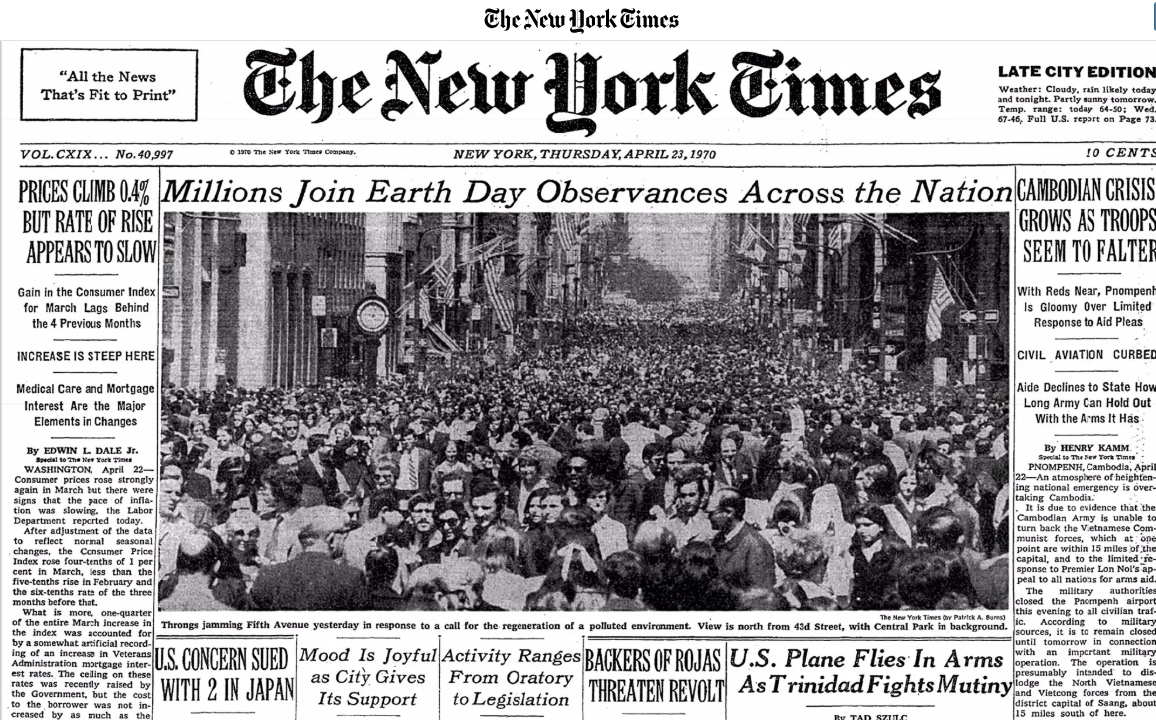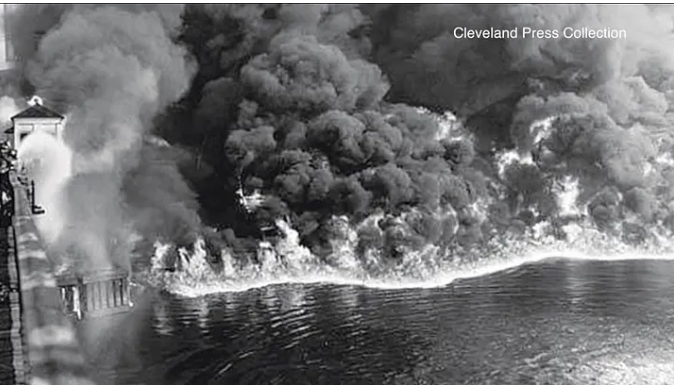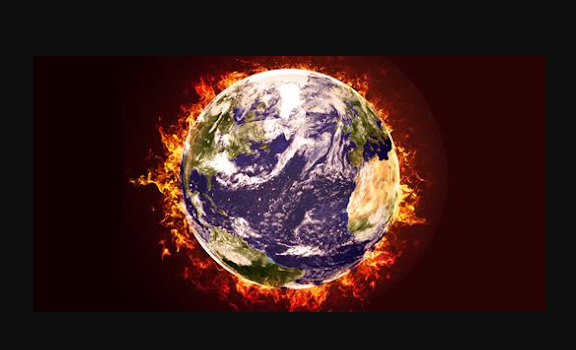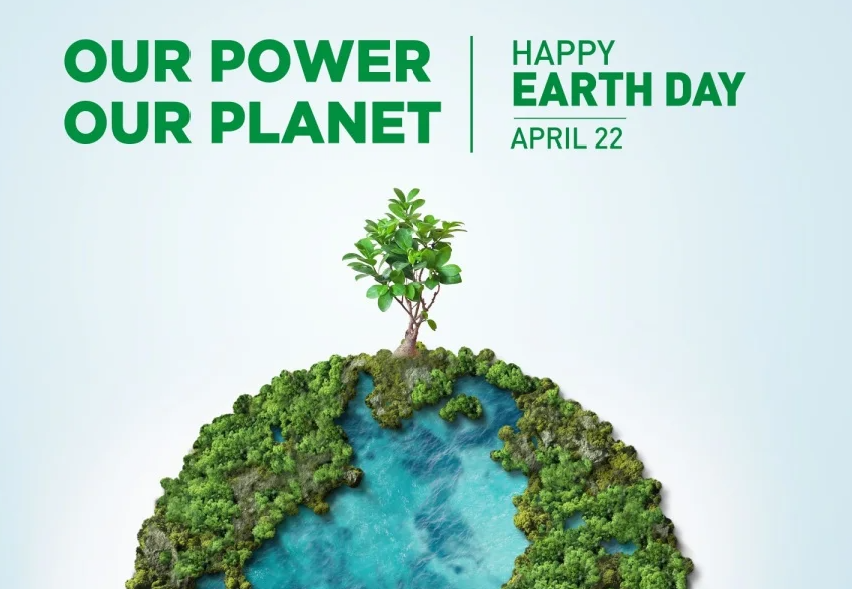Actions Today Matter for Your Future!


Earth Day isn’t just for hippies or tree huggers. It was born out of protest—and it still should be about protests. So what happened?
Forget the fuzzy “plant a tree and feel good” vibes. Earth Day was never meant to be a photo op. It was a radical act of resistance. A moment for people to rise up and say: enough is enough.
Enough pollution. Enough exploitation. Enough profit over people.
It’s a day to say you did something to fight for a cleaner future for the generations to come.
I recently learned my mom was one of the protesters at the very first Earth Day. She marched in her bell-bottom jeans, calling for a cleaner, safer planet. That story stuck with me.
So I started wondering: how did we go from that kind of Earth Day… to the one we see now?

Let’s Rewind to the 1960s
The roots of Earth Day trace back to a decade of turbulence, transformation, and environmental disaster. Back then, factories belched black smoke into the sky without consequence. Rivers were so polluted, they caught fire—literally. One infamous blaze on the Cuyahoga River in 1969 lit up national outrage.
Rachel Carson’s 1962 book Silent Spring exposed the deadly impact of pesticides on wildlife and human health. It cracked the illusion that science and industry always had our best interests in mind—and sparked a wave of environmental consciousness.
Enter Senator Gaylord Nelson of Wisconsin. Inspired by the energy of anti-war protests, he had a bold idea: what if student activism could be harnessed for the planet?
He recruited Denis Hayes, a 25-year-old organizer, to lead a national environmental teach-in. That "teach-in" became the first Earth Day—April 22, 1970. The date was strategic: after spring break, before final exams. Students could show up.
And they did.
Twenty million people—10% of the U.S. population—flooded the streets.
They gathered on campuses, in parks, in public squares. They weren’t just planting flowers. They were planting the seeds of accountability.
They called out corporate polluters. They demanded action—not emails. Not hashtags.
Real change.
And it worked.
By the end of 1970, the Environmental Protection Agency (EPA) was born. The Clean Air Act passed. The Clean Water Act came in 1972. The Endangered Species Act followed in 1973. These weren’t PR moves—they were laws.
Earth Day proved that people power could change the system.

Fast Forward to Today
What started as a fiery movement is now a watered-down marketing moment.
The protests have been replaced by plastic green branding—sponsored by the same companies fueling environmental collapse. (Looking at you, Coca-Cola. Clorox. Hefty. Exxon. Chevron. McDonalds. And many more.)
Today, Earth Day is over-commercialized.
Corporations slap a leaf on their logo, launch a feel-good campaign, and cash in on the moment. They lean into vague buzzwords—“eco-friendly,” “sustainable,” “biodegradable”—and bank on us not looking too closely.
Instead of breaking the status quo, we’re handed reusable water bottles. Instead of demanding legislation, we’re told to “do our part” while billion-dollar companies continue to pollute the Earth and make record breaking profits.
That didn’t happen overnight. And it wasn’t by accident.
As regulations got stronger, corporate resistance grew. Lobbying ramped up. Misinformation spread. And greenwashing was born—when a company pretends to care about the environment while doing the opposite behind closed doors.
Now, some of the worst polluters lead Earth Day campaigns. It’s a clever distraction: shift the spotlight to individual action, and off of corporate accountability.
(Side note: I’m for individual action AND systemic change. It’s not either/or—it’s both.)
But here’s the problem: we’ve bought into the feel-good version of Earth Day. Surface-level checklists. Reusable cups. Tree plantings. Social media posts.
Not bad. Just not nearly enough.
Not when the planet is warming, environmental protections are rolled back, and polluters keep profiting.
We don’t need another branded cleanup. We need disruption. Urgency. Progress. The kind Earth Day was built on.

Let’s Create the Future We Want
This year, I’m thinking about my mom in those bell-bottoms—marching for clean air, safety, and justice. I’m thinking about the 20 million people who took to the streets and changed history.
And I’m thinking about how we can do it again.
Because Earth Day doesn’t need to be cozy. It needs to be consequential.
Here’s how you can reclaim the radical roots of Earth Day:
1. Follow the Money, Not the Marketing
- Before buying that “green” product, ask:
- Who owns this brand? What’s their track record?
- Are they using vague language like “eco-friendly” or “plant-based”?
- Watch out for misleading recycling labels too.
Instead, support small and local businesses when you can. (Two I love: Eco Roots and Zero Waste Store.)
Got a greenwashed email campaign in your inbox? Hit unsubscribe. Don’t like, share, or comment on social media posts from big corporations—it fuels their reach and viral ability.
2. Shift from Individual Action to Collective Pressure
Yes, reduce your waste and recycle right—but don’t stop there.
Call your elected officials. Show up at city council meetings. Support policies that hold polluters accountable and invest in real solutions.
Tools to help:
5 Calls for quick scripts and contact numbers
ResistBot for easy, automated messages
USA.gov to find your elected reps and their contact information
Even one message makes a difference.
3. Talk Trash (Seriously)
Start conversations. At work, with your friends, with your kids’ schools.
Challenge the “Earth Day is enough” mindset.
Ask better questions. Share facts. Push for better systems where you live.
Get others involved. Real power comes in numbers.
4. Participate in Real Actions, Not Just Hashtags
Look for Earth Day events focused on justice—not just optics.
Attend a climate rally. Sign a petition. Write a letter. Organize a workshop.
Show up where your voice matters.
5. Refuse the Feel-Good. Demand the Do-Better.
If something feels performative—say so.
If it feels urgent—act.
Stay up-to-date on environmental news through Independent journalism through Grist.org.
Change isn’t easy. Progress is messy. But that’s exactly why it matters.

What is your Answer?
We’re living in a critical moment. The lines are blurry. The messaging is slick. But we still have power—in our choices, our voices, and our resistance.
This Earth Day, resist the feel-good fluff.
Push past the PR.
Reclaim the roots.
Our Power, Our Planet ....
PS: I know this is meant to be about power as in electricity, but I'm reframing it to consumer power! :) Power to the people!
One day, someone may ask you:
“What did you do when it mattered most?”
Let’s give them an answer we’re proud of.